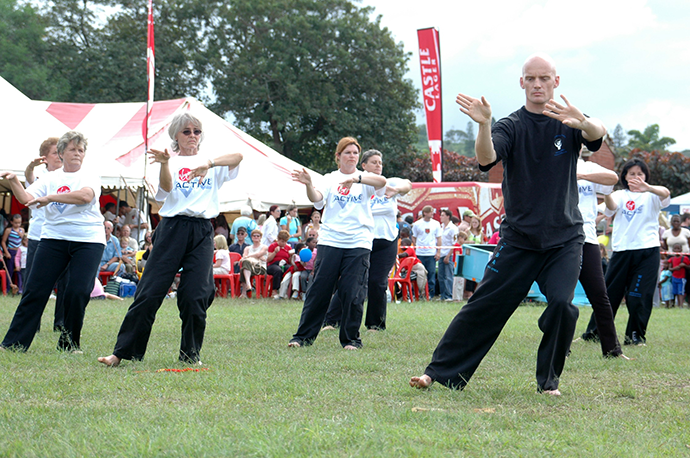- Magazine
- #readityourway
- Weekly Stories
- #shareyourstory
-
Adventure
- Abroad Travelling
- Africa Travelling
- Events
- Expos & Shows
- Festivals
- Fishing
- Free Diving
- Gliding
- Horse Riding
- Inspiring People
- Islands Travelling
- Kite/Windsurfing
- Motorbiking
- Motorised Water Sports
- Mountaineering
- Mountain Biking
- Off-road 4x4
- Off-road Motorbiking
- Paddling
- Performance Driving
- Photography
- Rock Climbing
- Rollerblading
- Sailing
- Scuba Diving
- Skateboarding
- Skydiving
- Snowboarding & Skiing
- Surfing
- Swimming
- Trail Running
- Wakeboarding
- Waveski Surfing
-
Sport
- Adventure Racing
- Fishing
- Free Diving
- Gliding
- Health & Fitness
- Horse Riding
- Inspiring People
- Kite/Windsurfing
- MMA
- Motorbiking
- Mountain Biking
- Multi-sport
- Off-road 4x4
- Off-road Motorbiking
- Paddling
- Performance Driving
- Photography
- Road Cycling
- Road Running
- Rock Climbing
- Rollerblading
- Sailing
- Scuba Diving
- Skateboarding
- Skydiving
- Snowboarding & Skiing
- Surfing
- Swimming
- Rugby
- Trail Running
- Triathlon
- Wakeboarding
- Waveski Surfing
- Lifestyle
- Calendar
Tai Chi: The Ancient Path to Stress-FREE Living
Words: Morné Swanepoel | Photos: www.SATaiChi.org
Topic:
Health & Fitness
Topic:
Mixed Martial Arts (MMA)
One can hardly pick up a newspaper, magazine or watch TV these days without seeing or hearing some reference to STRESS. So why all the sudden fuss and fascination? After all, stress has been around since Adam and Eve were evicted from the Garden of Eden. Is it because there is much more stress today? Is it because the nature of contemporary stress is somehow different and more dangerous? Or is it because scientific research has increasingly confirmed the crucial role stress can play in causing and aggravating different disorders, and the diverse mechanisms of actions responsible for mediating its multitudinous effects?
The answer to these questions is a resounding yes!

Stress is the 'wear and tear' our bodies experience as we adjust to our continually changing environment; it affects us physically and emotionally and can create positive or negative feelings. As a positive influence, stress can help compel us to action, it can result in a new awareness and exciting new perspective. As a negative influence, it can result in feelings of distrust, rejection, anger, and depression, which in turn can lead to health problems such as headaches, an upset stomach, rashes, insomnia, ulcers, high blood pressure, heart disease, and strokes. With the death of a loved one, the birth of a child, a job promotion, or a new relationship, we experience stress as we readjust our lives. In adjusting to different circumstances, stress will help or hinder us depending on how we react to it.
Tai Chi (pronounced ti-chee) is sometimes described as 'meditation in motion'. Originally developed in China as a form of self-defence, this graceful form of exercise has existed for about 2,000 years. It's becoming increasingly popular around the world, both as a basic exercise programme and as a complement to other health-care methods. Health benefits include stress reduction, greater balance, muscular development/control and increased flexibility - especially for older adults.
When I began practising Tai Chi in 1990, what struck me was its power, or at least the promise of its power and healing benefits. I discovered there was nothing mystical or particularly esoteric about the power of Tai Chi. The benefits are immense and include improved coordination, circulation, posture, balance and well-being. Because Tai Chi's practised slowly and with a relaxed focus, the nervous system becomes calmer and so do you. This meditative effect gives you a clearer perspective mentally and in today’s fast-paced world this is a huge resource. In fact, the stress-relieving attributes are one of the main reasons why people start Tai Chi, as it gives them a calm mind and real sense of physical, emotional and spiritual health and well-being.
Tai Chi started a long time ago, so it has had time to evolve into what we see today. The slow process of change that has happened to Tai Chi over the centuries is mirrored in the way it is practised, for example, at a meditative pace with no rush to complete its intricate and engrossing movements. The softness and flow makes you relax, but it’s a rejuvenating kind of relaxation. At the end of a class, people are buzzing with Qi (life force), as the practise encourages your energy to flow, and tension and blockages just seem to dissolve away. It all sounds great, which it is, but you have to put a little effort in to get results. It’s hard to get your head around the fact that something so graceful and elegant can be used for self-defence too. But then again there is an old Chinese saying that says, ‘the best fighters never fight’. Therefore, if you have no enemies internally or externally, then there is no need for conflict.
The philosophy behind Tai Chi (Taoism) is really useful too and includes the theory that if you fight force with force any conflict will get worse. It teaches yielding and flexibility to overcome any situation, and can diffuse a situation leaving room for negotiation and dialogue. When you take something like this into your daily life then you have gained a distinct advantage. Yielding encourages listening, and when you listen you gain more information and it is easier to see where someone is coming from. In the workplace such a strategy would create less stress for everyone!
Part of the physiological aspect of Tai Chi includes the effect it has on our brain, lymphatic system and joints. Recent neurological research has found that Tai Chi encourages the brain to perform more effectively. This is partly due to the brain receiving more oxygenated blood (as the breathing technique in Tai Chi improves lung capacity and elasticity), but also because the meditative, calming effect of Tai Chi changes the brains frequency from beta (active normal waking waves) to alpha (receptive between sleep and awake waves that are related to improved ability to learn and remember). The lymphatic system is partly responsible for detoxifying the blood and is stimulated by the gentle muscular work in Tai Chi. The soft, relaxed movements of Tai Chi massage the lymph nodes, thus improving their function and boosting the immune system. The joints of the body are often where aches and pains first creep in, so maintaining healthy, active joints is important at any age.
Because the load bearing joints of the body are kept in strong alignment throughout Tai Chi and are never abused nor greatly impacted upon, their health and function is protected whilst the circulation of blood in and around the joints is increased.
In the competitive marketplace, retention of quality employees is often determined by the scope of the compensation package each company extends. Numerous companies worldwide are now incorporating a ‘Tai Chi break’ to expose their employees to this therapeutic art, to improve performance. What makes it so popular is that there is no expensive outlay for equipment and no special workspace is necessary. It has been proven globally that employees become more productive when exposed to regular sessions.
Who is Tai Chi for?
If you're trying to improve your general health, you may find Tai Chi helpful as part of your programme. It is generally safe for people of all ages and levels of fitness. Studies have shown that for older adults, Tai Chi can improve balance and reduce the risk of falls. Because the movements are low impact and put minimal stress on your muscles and joints, Tai Chi is appealing to many older adults. For these same reasons, if you have a condition such as arthritis or you're recovering from an injury, you may also find it useful.
Tai Chi can offer both physical and mental benefits no matter what your age. It's used to:
• Reduce stress
• Increase flexibility
• Improve muscle strength and definition
• Increase energy, stamina, and agility
• Increase feelings of well-being
Tai Chi hasn't been studied scientifically until recently. Preliminary research shows that for older adults, in particular, practising regularly may:
• Reduce anxiety and depression
• Improve balance and coordination, thus reducing the number of falls
• Improve sleep quality, by staying asleep longer at night and feeling more alert during the day
• Slow bone loss in women following menopause
• Reduce high blood pressure
• Improve cardiovascular fitness
• Relieve chronic pain
• Improve everyday physical functioning
When learnt correctly and practised regularly, Tai Chi can be a positive form of exercise because:
• It's self paced and non-competitive
• You don't need a large space, special clothing or equipment
• You can do it anytime and anyplace
• It's easy to do in groups, as well as by yourself
As Tai Chi is slow and gentle, it has virtually no negative side effects. It's possible that you could strain yourself or overdo things when first learning, but with proper instruction this shouldn't pose a barrier to practising Tai Chi.
Learning Tai Chi
To gain the full benefits of Tai Chi and reduce the small risk of injury, learn to do the postures and movements the correct way from the start. Strict attention to your body position and breathing are critical, so it's best to study directly under a qualified teacher. As you attend a series of classes, the instructor can give you personal guidance and correct any errors in your approach before they become habit. As you practise, you learn how to do Tai Chi without straining your muscles and joints, and you can also learn from multimedia productions such as instructional DVD’s and tapes. Once you're comfortable with the basics, do it by yourself. You may find it helpful to practise in the same place and at the same time every day.
You are likely to experience some health benefits right away, but they probably won't be dramatic. Be patient. Health benefits accumulate over time. Although Tai Chi is generally safe, consider talking with your doctor before starting a new programme, especially if you have any problems with your joints, spine or heart.
dinFO:
You can find Tai Chi classes throughout South Africa. To locate a class in your community or enquire about the long distance training programme, send an email to or visit www.sataichi.org.
For more information and articles on Tai Chi for health, visit my teacher's website at www.taijiworld.com/
tai-chi-for-health.html.
Issue:
Issue 20 Dec '12
Contributor:
Morne Swanepoel










